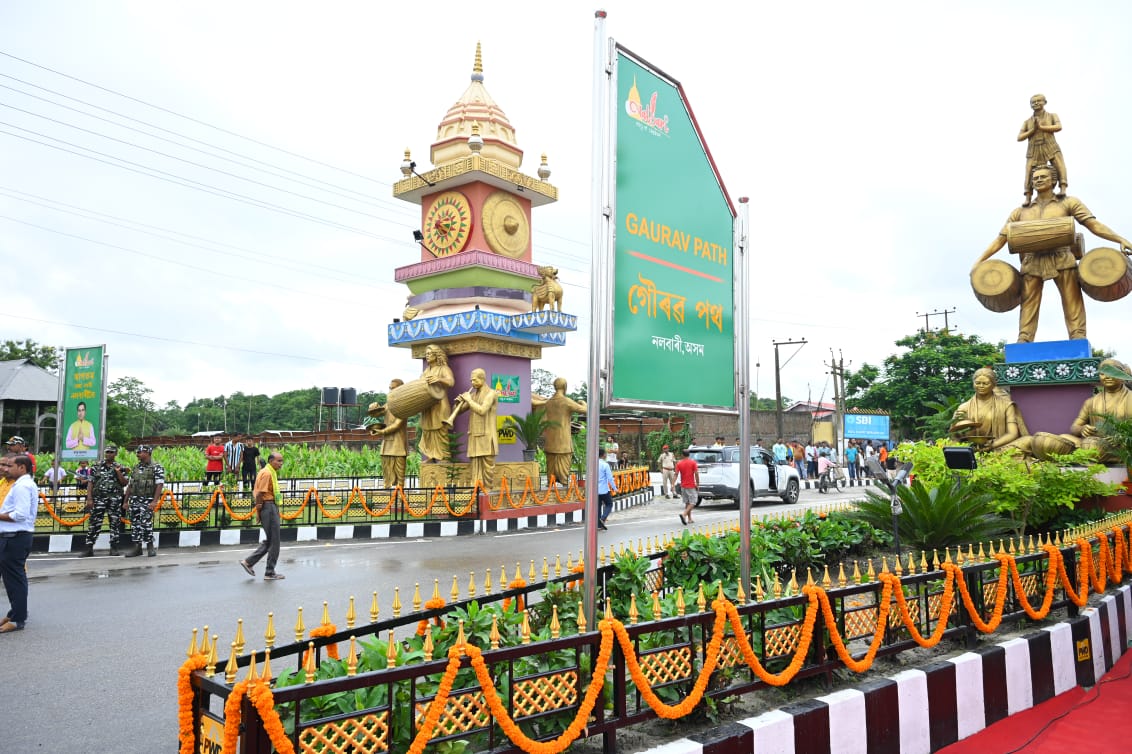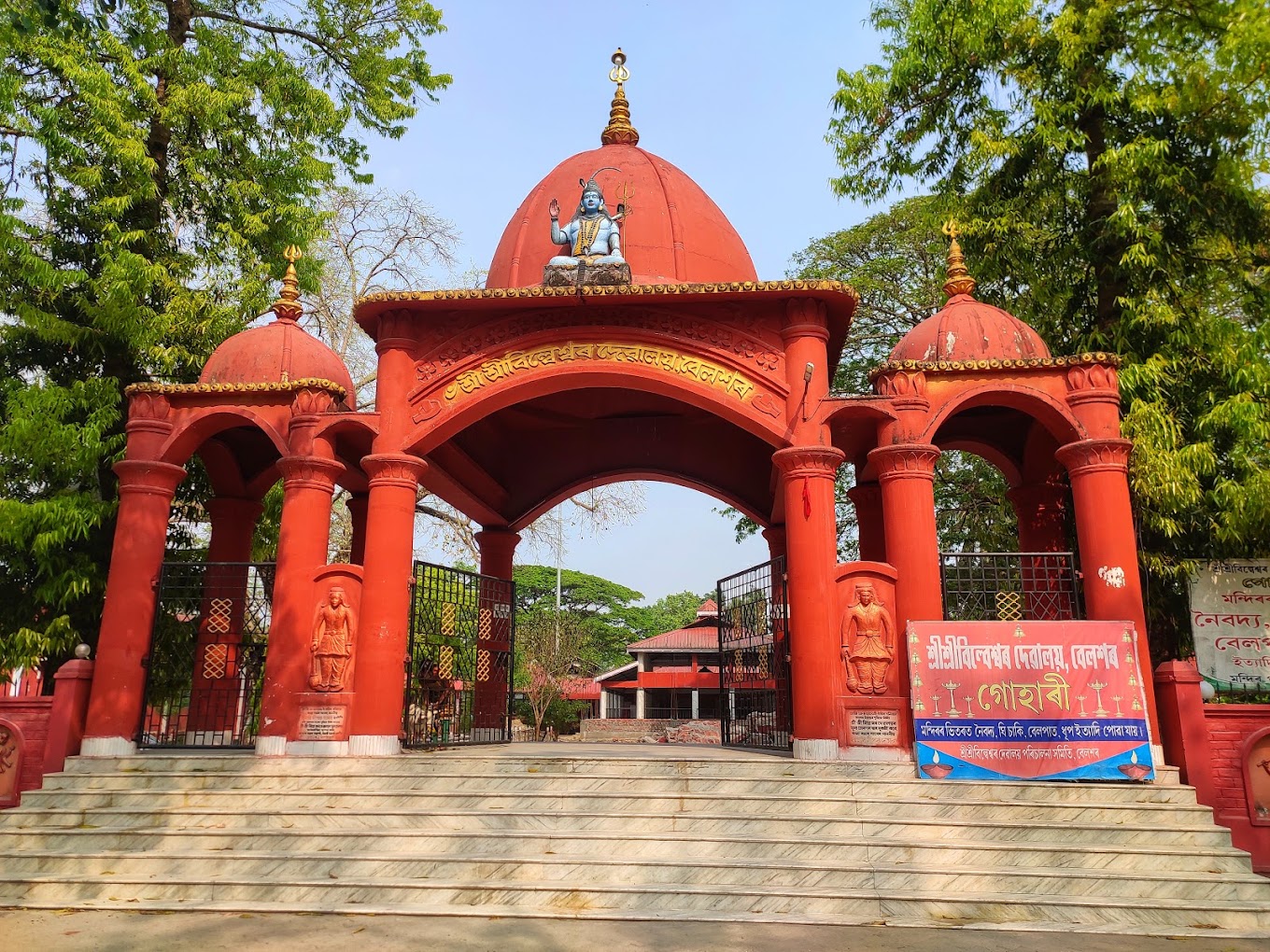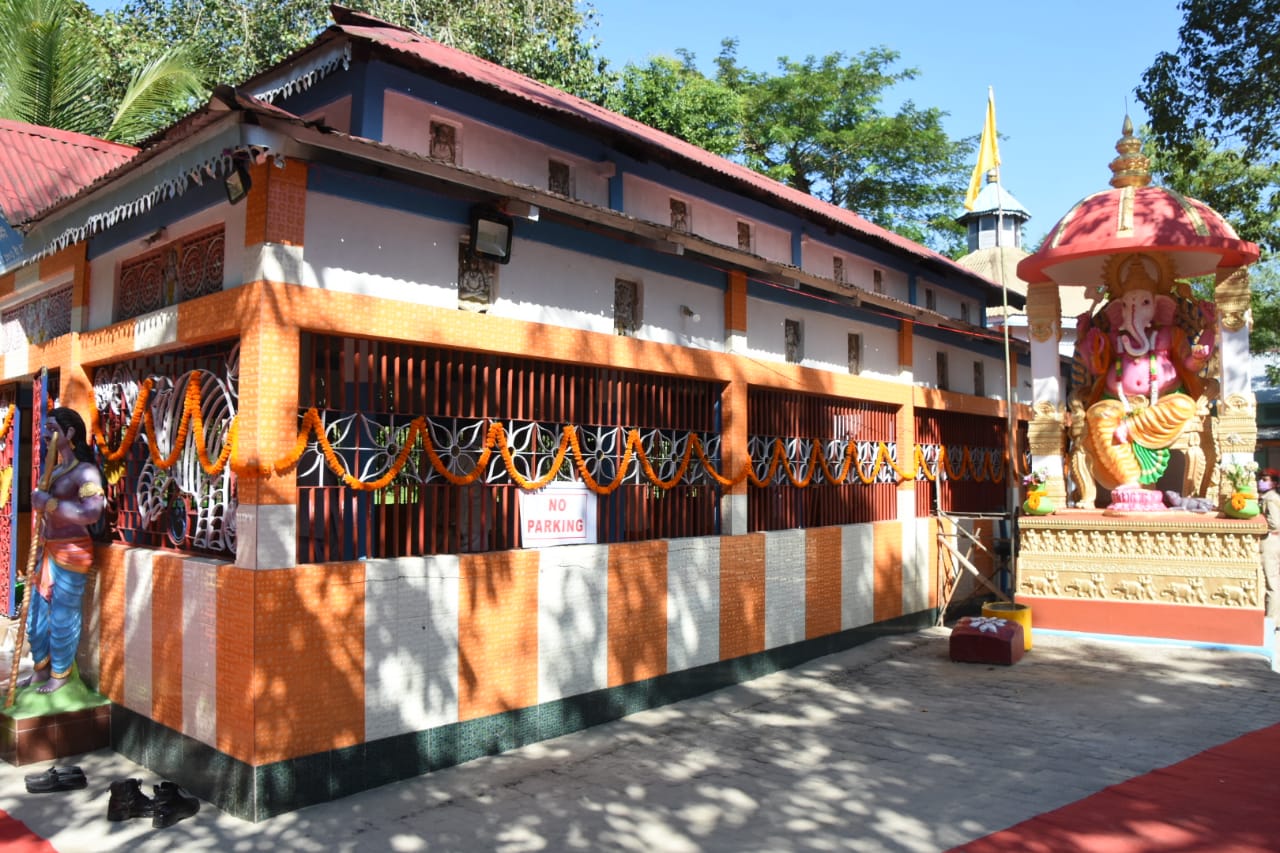
Journey Through Nalbari: Explore Its Famous and Timeless Temples

 :
| Updated On: 22-Aug-2025 @ 3:52 pm
:
| Updated On: 22-Aug-2025 @ 3:52 pmSHARE
Billeswar Devalaya
Why Visit Billeswar Devalaya
-
Spiritual Significance: Dedicated to Lord Shiva, Billeswar Devalaya is one of the oldest and most revered temples in the Nalbari district. Devotees believe that offering prayers here brings peace, prosperity, and blessings.
-
Historical and Cultural Value: The temple showcases traditional Assamese architecture and reflects the rich cultural heritage of the region. It’s a must-visit for history enthusiasts and culture seekers.
-
Festivals and Rituals: The temple is a hub of devotion during Maha Shivaratri, with elaborate rituals, fairs, and gatherings that give visitors a glimpse into local traditions and customs.
When to Visit
-
Best Time: Early mornings or evenings for a peaceful and serene experience.
-
Special Occasions: Maha Shivaratri (February/March) is the best time to witness grand celebrations with a festive atmosphere.
-
Weather Consideration: Visit during October to March, when the weather is pleasant and ideal for sightseeing. Summers (April-June) can be hot and humid.
How to Reach Billeswar Devalaya
-
By Road: The temple is easily accessible from Nalbari town. Private taxis, auto-rickshaws, or local buses can take you there.
-
By Rail: The nearest railway station is Nalbari Railway Station, which is about 6-8 km from the temple. From the station, you can hire a taxi or auto-rickshaw.
-
By Air: The closest airport is Lokpriya Gopinath Bordoloi International Airport, Guwahati (about 70 km). From the airport, you can hire a taxi or take a bus to Nalbari.
Balilecha Kali Mandir

Why Visit Balilesa Kali Mandir
Spiritual Significance: Dedicated to Goddess Kali, this temple is a center of devotion for locals and pilgrims alike. Devotees visit to seek protection, blessings, and spiritual solace.
Cultural Importance: The temple showcases traditional Assamese temple architecture and offers insight into local religious practices and festivals.
Festivals and Celebrations: The temple comes alive during Diwali, Kali Puja, and Navratri, with elaborate rituals, decorations, and community gatherings. These events provide a vibrant cultural experience.
Tips for Visitors
-
Dress modestly and respectfully, as it is an active place of worship.
-
Participate in rituals like aarti for a more immersive experience.
-
Carry water and wear comfortable footwear if planning to explore the temple surroundings.
-
Avoid visiting during heavy rainfall, as roads in the area can get slippery.
How to Reach Balilesa Kali Mandir
By Road: The temple is accessible from Nalbari town via taxis, auto-rickshaws, or local buses. It is well-connected by the local road network.
By Rail: The nearest railway station is Nalbari Railway Station, about 5–7 km away. From there, you can hire a taxi or auto to reach the temple.
By Air: Lokpriya Gopinath Bordoloi International Airport, Guwahati, is the nearest airport (around 65–70 km). From the airport, you can hire a taxi or take a bus to Nalbari, then proceed to the temple.
When to Visit
Best Time: Early mornings or late afternoons to enjoy a peaceful and serene atmosphere. Festivals: Kali Puja (usually October/November) and Navratri (September/October) are the best times to experience the temple in its full festive glory. Weather Consideration: Visit between October and March, when the weather is cool and comfortable. Summers can be hot and humid, which may make travel uncomfortable.
Hari Mandir

Why Visit Hari Mandir
Spiritual Significance: Hari Mandir is dedicated to Lord Vishnu (Hari), attracting devotees seeking blessings, peace, and spiritual guidance. The temple is a hub for daily prayers, rituals, and religious ceremonies.
Cultural Value: The temple reflects traditional Assamese architecture with intricate carvings and serene surroundings, offering visitors a glimpse into local heritage.
Festivals: Major Hindu festivals like Janmashtami, Rama Navami, and Diwali are celebrated with great enthusiasm, making it a culturally immersive experience for visitors.
Tips for Visitors
-
Dress modestly and respectfully, as it is an active place of worship.
-
Participate in aarti or other rituals for a more immersive spiritual experience.
-
Carry essentials like water and a small bag for offerings.
-
Avoid visiting during heavy rainfall, as some roads leading to the temple may get slippery.
How to Reach Hari Mandir
-
By Road: The temple is accessible from Nalbari town via taxis, auto-rickshaws, or local buses. It is well-connected by the local road network.
-
By Rail: The nearest railway station is Nalbari Railway Station, about 5–7 km away. From there, you can hire a taxi or auto to reach the temple.
-
By Air: Lokpriya Gopinath Bordoloi International Airport, Guwahati, is the nearest airport (around 65–70 km). From the airport, you can hire a taxi or take a bus to Nalbari, then proceed to the temple.
When to Visit
-
Best Time: Early mornings or late afternoons to enjoy a peaceful and serene atmosphere.
-
Festivals: Kali Puja (usually October/November) and Navratri (September/October) are the best times to experience the temple in its full festive glory.
-
Weather Consideration: Visit between October and March, when the weather is cool and comfortable. Summers can be hot and humid, which may make travel uncomfortable.
Ganesh Mandir
Why Visit Ganesh Mandir
Spiritual Significance: Ganesh Mandir is dedicated to Lord Ganesha, the remover of obstacles and god of new beginnings. Devotees visit to seek blessings for success, prosperity, and health.
Cultural Importance: The temple hosts vibrant community gatherings and showcases Assamese religious traditions. It’s a place to experience local devotion and rituals.
Festivals: Ganesh Chaturthi is celebrated with grandeur, drawing large crowds and creating a lively, devotional atmosphere.
Tips for Visitors
-
Dress modestly and respectfully as it is a sacred site.
-
Join in aarti and other rituals to experience the spiritual ambiance fully.
-
Carry essentials such as water, offerings, and a small bag.
-
Avoid visiting during heavy rain as roads may get slippery and challenging to navigate.
How to Reach Ganesh Mandir
-
By Road: Easily accessible from Nalbari town via taxis, auto-rickshaws, or local buses. Roads are generally well-maintained.
-
By Rail: The nearest railway station is Nalbari Railway Station, about 5–6 km from the temple. From there, hire a taxi or auto-rickshaw to reach the temple.
-
By Air: Lokpriya Gopinath Bordoloi International Airport, Guwahati, is the closest airport (around 65–70 km). From the airport, take a taxi or bus to Nalbari and proceed to the temple.
When to Visit
-
Best Time: Early mornings or late afternoons for a calm and peaceful visit.
-
Festivals: Janmashtami (August/September) and Rama Navami (March/April) are the best times to witness vibrant celebrations and rituals.
-
Weather Consideration: Visit between October and March for pleasant weather. Summers (April–June) can be hot and humid, making sightseeing less comfortable.
Khajara Ashram

Why Visit Khajara Ashram
Spiritual Retreat: Khajara Ashram is a serene place for meditation, yoga, and spiritual reflection. It attracts devotees and seekers looking for peace and inner calm.
Historical and Cultural Significance: The Ashram is tied to local religious traditions and hosts various spiritual programs and discourses throughout the year.
Community Experience: Visitors can witness devotional activities, chanting sessions, and sometimes participate in communal rituals, giving an immersive cultural experience.
Tips for Visitors
-
Dress modestly and respectfully as it is a sacred site.
-
Participate in rituals and aarti to fully experience the spiritual ambiance.
-
Carry essentials such as water, offerings, and a small bag.
-
Avoid visiting during heavy rain, as local roads may become slippery or difficult to navigate.
How to Reach Khajara Ashram
-
By Road: Easily accessible from Nalbari town via taxis, auto-rickshaws, or local buses. Roads are generally well-maintained.
-
By Rail: The nearest railway station is Nalbari Railway Station, approximately 3–5 km from the temple. From there, hire a taxi or auto-rickshaw.
-
By Air: Lokpriya Gopinath Bordoloi International Airport, Guwahati, is the closest airport (around 65–70 km). From the airport, take a taxi or bus to Nalbari and then proceed to the temple.
When to Visit
-
Best Time: Early mornings or late afternoons for a serene experience and to participate in aarti.
-
Festivals: Ganesh Chaturthi (August/September) is the most auspicious time to visit.
-
Weather Consideration: Visit between October and March for pleasant weather. Summers (April–June) can be hot, and monsoon season (June–September) may have heavy rainfall, affecting travel.

